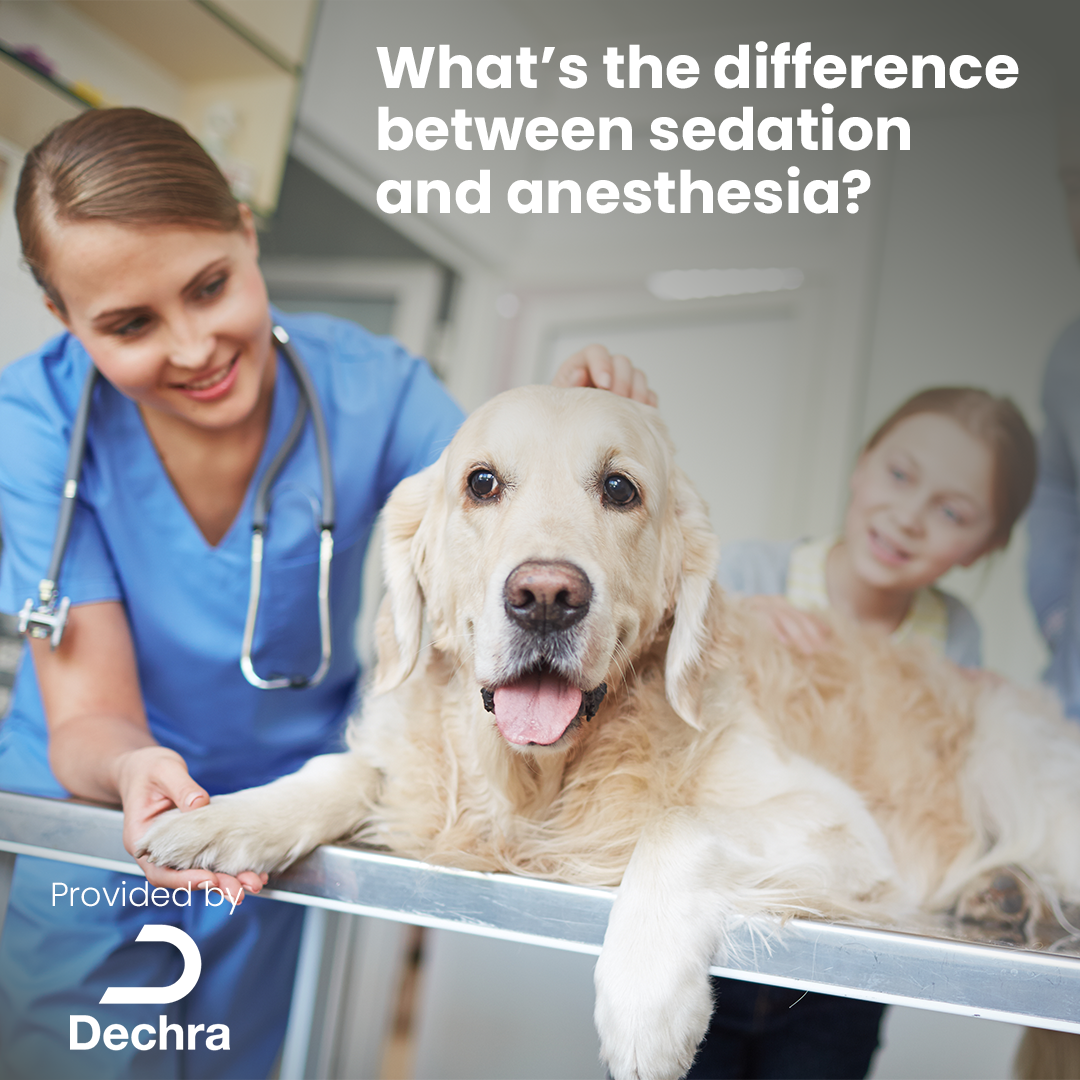Do you know the difference between sedation and general anesthesia? Sedation refers to a state where the patient is calm and relaxed and may or may not be conscious. Sedation is typically used for less-invasive veterinary procedures such as diagnostic imaging, joint injections, suture removal, and wound management that last 30 minutes or less. Injectable sedation is short-acting, and with many sedatives, a reversal agent can be given, if needed, once the procedure is complete. This agent reverses the effects of the sedative on the central nervous system so your pet can fully recover within 15-20 minutes after injection of the reversal agent.
On the other hand, balanced anesthesia, which generally includes premedication, pain relief and gas anesthesia, produces a loss of consciousness. General anesthesia is typically used for longer, more invasive procedures such as surgery or dental cleanings, or if there must be absolutely no movement over an extended period. When a pet is under general anesthesia, a tube is placed through their mouth into the trachea which is then connected to an anesthetic machine to allow oxygen and the inhalant anesthetic to enter the patient’s lungs for absorption into the body.
Tranquilizers or mild sedatives at lower doses can also be used to decrease anxiety and fear in our pets. As part of Capitaland Animal Hospital’s fear-free program our veterinarians may recommend a tranquilizer or antianxiety medication (not quite the same as a sedative/tranquilizer) for a pet that may be stressed or fearful. This is not needed for most pets, but these medications, along with calm, gentle handling and treats can help our pets overcome any stress or fear they might otherwise experience during an exam. Oftentimes, after several “happy visits” with a fear-tamping tranquilizer or anti-anxiety medication, your pet may not even need it anymore.

